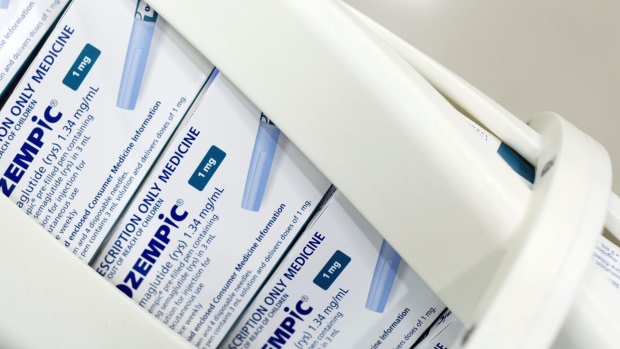Feb 16, 2024
Ozempic Users Cut Grocery Spending by Up to 9%, Survey Finds
, Bloomberg News

(Bloomberg) -- There’s now data to justify the anxiety from snack-food makers about how appetite-suppressing weight-loss shots like Ozempic will hurt their business.
When monthly grocery spending is adjusted for factors including household size and income, spending in households that use so-called GLP-1 drugs decreased by 6% to 9% versus non-GLP-1 households, Morgan Stanley said in a report, citing a survey from Numerator, a market-research provider.
Certain grocery items are particularly affected, with snacks, pastries and ice cream purchased less by households with GLP-1 users. Sales of yogurt, fish and vegetable snacks increased.
Companies from retailers to packaged-food producers are weighing the impact from the rise of GLP-1 use, which is estimated to grow to a $100 billion market by 2030. Walmart Inc.’s US chief executive officer last year said those using the medications were buying less food. Novo Nordisk A/S CEO Lars Fruergaard Jorgensen, whose company makes Ozempic, in a recent interview said he has received calls from counterparts at food companies who are wary of the potential impact.
The Numerator survey from January uses data from more than 90,000 households, according to Morgan Stanley. It showed that 12.3% of households said they had a member taking a GLP-1 in January, up from 11.4% in October 2023. GLP-1 user growth is being driven by weight-loss treatment, Morgan Stanley said, with a larger portion of these users paying out of pocket for the medications compared with those taking the drugs to treat diabetes.
The data also found that when GLP-1 users stop taking this medication, monthly household spending bounces back to prior spending levels.
©2024 Bloomberg L.P.





